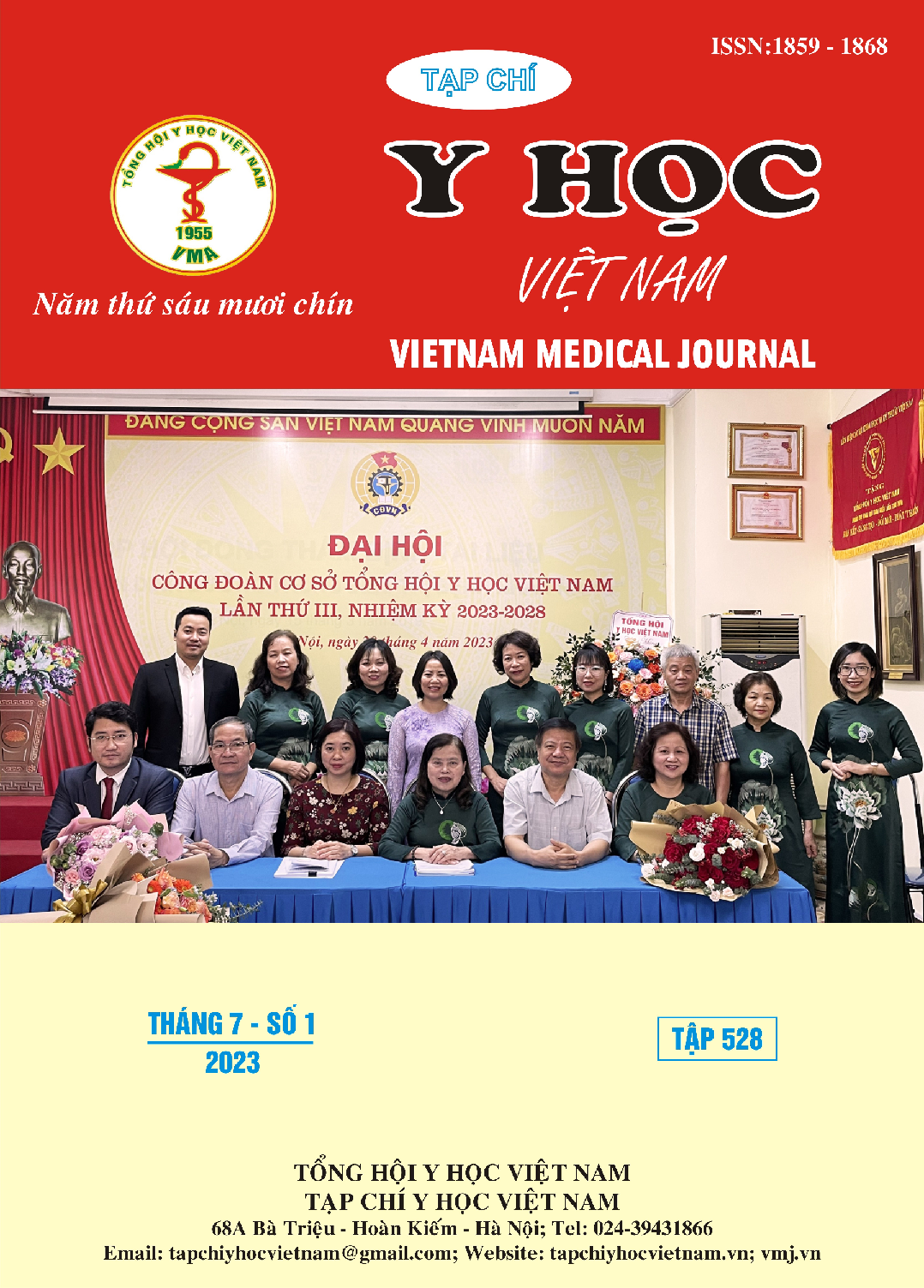CÁC YẾU TỐ LIÊN QUAN ĐẾN NGHIỆN INTERNET CỦA NGƯỜI BỆNH TỪ 10 ĐẾN 24 TUỔI ĐIỀU TRỊ NỘI TRÚ TẠI VIỆN SỨC KHỎE TÂM THẦN - BỆNH VIỆN BẠCH MAI
Nội dung chính của bài viết
Tóm tắt
Đặt vấn đề: Nghiện Internet là một loại nghiện hành vi - một vấn đề sức khỏe tâm thần phổ biến hiện nay, đặc biệt ở độ tuổi thanh thiếu niên, với nhiều tác động tiêu cực đến thể chất, tinh thần, xã hội. Các yếu tố liên quan đến nghiện Internet chưa nhận được sự đồng thuận trong y văn. Do đó, chúng tôi thực hiện nghiên cứu: “Các yếu tố liên quan đến nghiện Internet của người bệnh nội trú từ 10 đến 24 tuổi tại Viện Sức khỏe Tâm thần- Bệnh viện Bạch Mai”. Mục tiêu: “Các yếu tố liên quan đến nghiện Internet của người bệnh nội trú từ 10 đến 24 tuổi tại Viện Sức khỏe Tâm thần- Bệnh viện Bạch Mai”. Đối tượng và phương pháp nghiên cứu: Nghiên cứu mô tả cắt ngang có hồi cứu 109 người bệnh nội trú từ 10- 24 tuổi tại Viên Sức khỏe Tâm thần từ tháng 12/2020-12/2022. Kết quả: tỷ lệ sử dụng Internet ở quần thể nghiên cứu là 100%, trong đó tỷ lệ nghiện Internet theo tiêu chuẩn lâm sàng là 43,1%.Yếu tố nguy cơ tăng tỷ lệ nghiên Internet ở người trẻ tuổi là nam giới với mục đích sử dụng ưu tiên là trò chơi điện tử (p=0,042, OR=3,73), thời gian sử dụng ≥ 3h/ngày (p<0,01, OR=16,43), rối loạn nghiêm trọng chức năng gia đình (theo thang APGAR) (p<0,01, OR=4,97), bố mẹ khuyến khích sử dụng Internet (p<0,01, OR=31,48), bố mẹ sử dụng Internet nhiều (p<0,01, OR=6,15) và các triệu chứng ám ảnh, triệu chứng cơ thể, nhạy cảm cá nhân trên ngưỡng bất thường theo thang Symptom check list-90. Kết luận: Nghiện Internet là phổ biến ở quần thể nghiên cứu, với nhiều yếu tố liên quan làm tăng tỷ lệ mắc. Vì vậy việc quản lý các yếu tố trên là cần thiết để góp phần giảm thiểu khả năng nghiện Internet, qua đó làm giảm hậu quả, tác hại của nó đến sức khỏe thể chất và tinh thần của người sử dụng.
Chi tiết bài viết
Từ khóa
Internet, nghiện Internet, yếu tố liên quan
Tài liệu tham khảo
2. Mari E, Biondi S, Varchetta M, et al. Gender differences in internet addiction: A study on variables related to its possible development. Computers in Human Behavior Reports. 2023;9:100247. doi:10.1016/j.chbr.2022.100247
3. Sun P, Johnson CA, Palmer P, et al. Concurrent and Predictive Relationships Between Compulsive Internet Use and Substance Use: Findings from Vocational High School Students in China and the USA. IJERPH. 2012;9(3):660-673. doi:10.3390/ijerph9030660
4. Kuss DJ, van Rooij AJ, Shorter GW, Griffiths MD, van de Mheen D. Internet addiction in adolescents: Prevalence and risk factors. Computers in Human Behavior. 2013;29(5):1987-1996. doi:10.1016/j.chb.2013.04.002
5. van den Eijnden RJJM, Spijkerman R, Vermulst AA, van Rooij TJ, Engels RCME. Compulsive Internet Use Among Adolescents: Bidirectional Parent–Child Relationships. J Abnorm Child Psychol. 2010;38(1):77-89. doi:10.1007/s10802-009-9347-8
6. Zamboni L, Portoghese I, Congiu A, et al. Internet Addiction and Related Clinical Problems: A Study on Italian Young Adults. Front Psychol. 2020;11:571638. doi:10.3389/fpsyg.2020.571638
7. Lin YJ, Hsiao RC, Liu TL, Yen CF. Bidirectional relationships of psychiatric symptoms with internet addiction in college students: A prospective study. Journal of the Formosan Medical Association. 2020;119(6):1093-1100. doi:10.1016/j.jfma.2019.10.006


